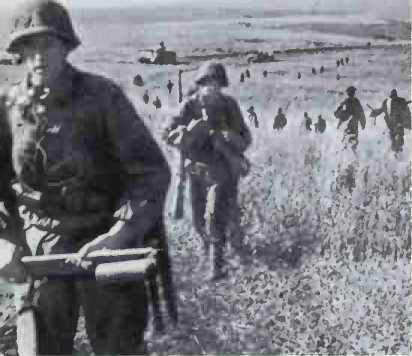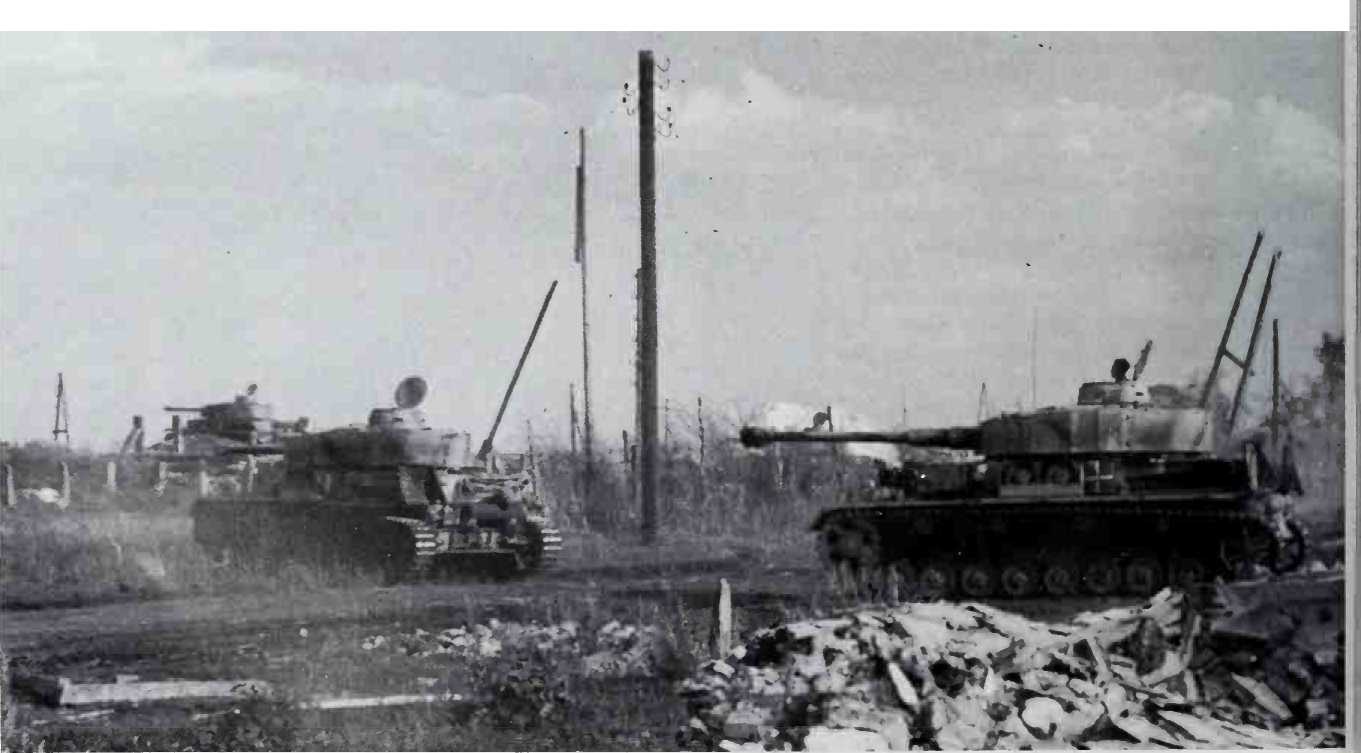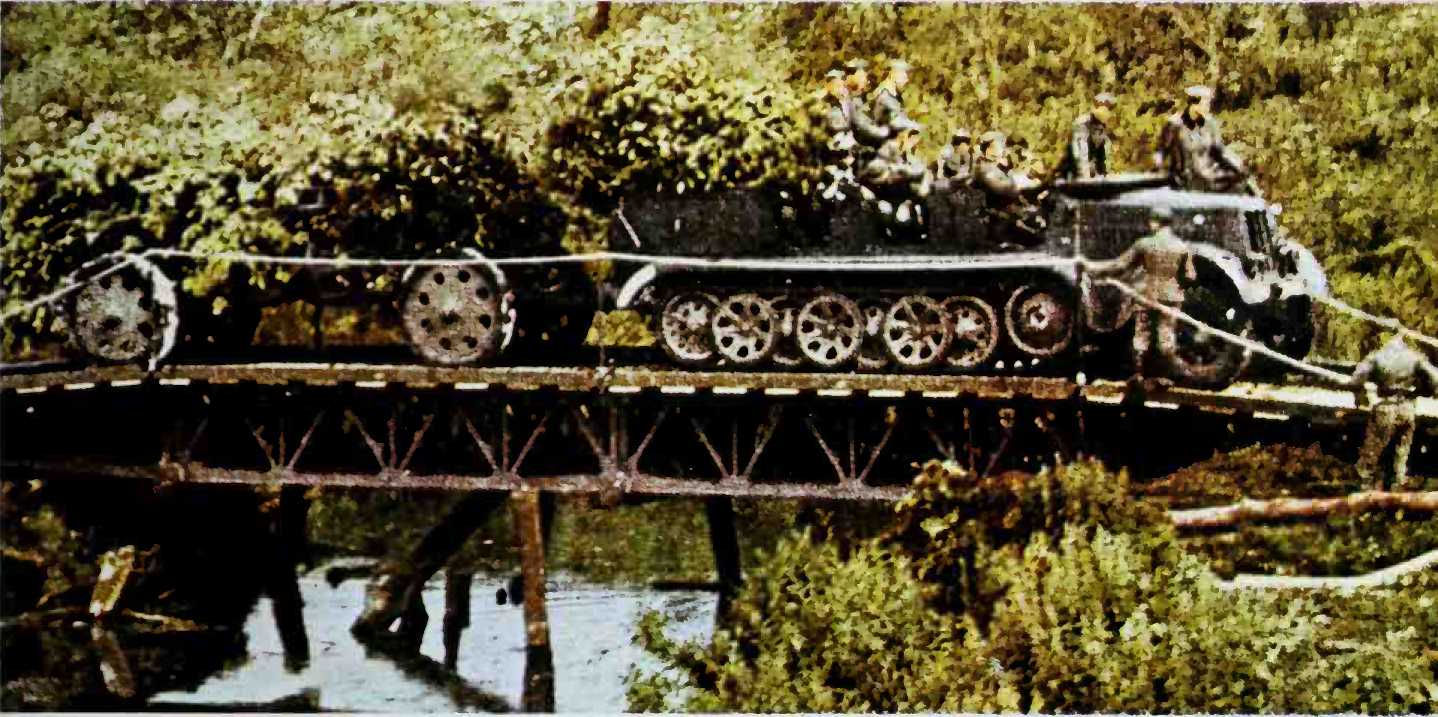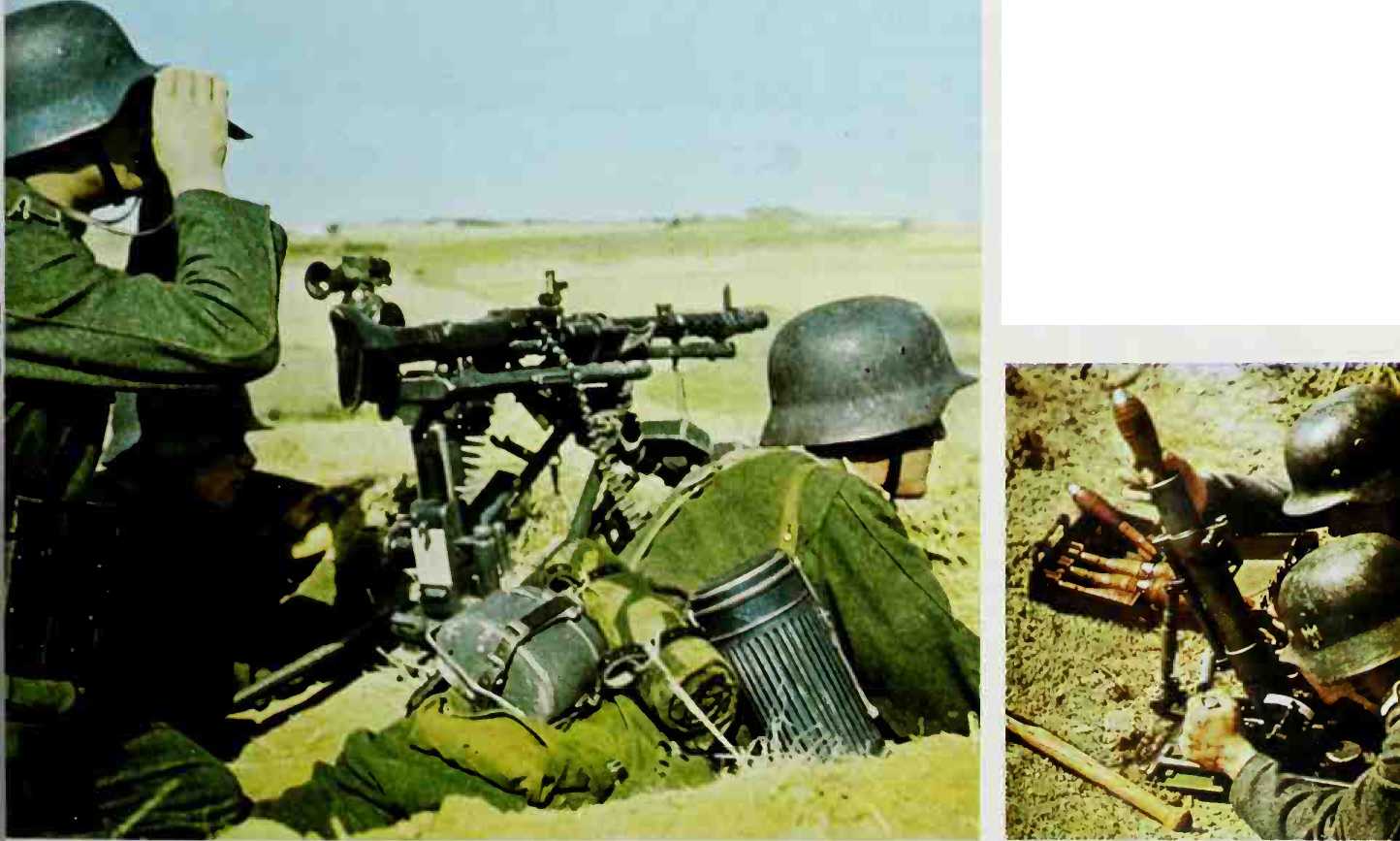In any event, this agonising question did not preoccupy Hitler who, on April 15, put his signature to the 13 copies of Operational Order No. 16. The document is

A With a flame-thrower at point, a column of S. S. trodpers plod through the rolling steppe. After "Zitadelle” their losses were so severe that they made up with volunteers from occupied countries, though the original units attempted to maintain their Germanic character.
V Pzkw lVF2s move through the outskirts of a Russian town. Even with extra armour and a more powerful gun, the Pzkw IV was still a stop-gap weapon when used on the Eastern Front.

A long one, as are all those which Hitler wrote, and the following extract will serve to illuminate the events that subsequently took place:
"I am resolved, as soon as the weather allows, to launch Operation ’Zitadelle’, as the first offensive action of this year,” were his opening words. "Hence the importance of this offensive. It must lead to a rapid and decisive success. It must give us the initiative for the coming spring and summer. In view of this, preparations must he conducted with the utmost precaution and the utmost energy. At the main points of attack the finest units, the finest weapons, the finest commanders will be committed, and plentiful supplies of munitions will be ensured. Every commander, every fighting man must be imbued with the capital significance of this offensive. The victory of Kursk must be as a beacon to the whole world.
"To this effect, I order:
1. Objective of the offensive: by means of a highly concentrated, and savage attack vigorously conducted by two armies, one from the area of Belgorod, the other from south of Orel, to encircle the enemy forces situated in the region of Kursk and annihilate them by concentric attacks.
"In the course of this offensive a new and shorter front line will be established.
Permitting economies of means, along the line joining Nejega, Korocha, Skoro-dnoye, Tim, passing east of Shchigry, and Sosna.”
Under Point 2, the Fiihrer went on to define the conditions necessary for the success of the enterprise:
"(a) to ensure to the full the advantage of surprise, and principally to keep the enemy ignorant of the timing of attack;
(b) to concentrate to the utmost the attacking forces on narrow fronts so as to obtain an overwhelming local superiority in all arms (tanks, assault guns, artillery, and rocket launchers) grouped in a single echelon until junction between the two armies in the rear of the enemy is effected, thereby cutting him off from his rear areas;
(c) to bring up as fast as possible, from the rear, the forces necessary to cover the flanks of the offensive thrusts, thus enabling the attacking forces to concentrate solely on their advance;
(d) by driving into the pocket from all sides and with all possible speed, to give the enemy no respite, and to accelerate his destruction;
(e) to execute the attack at a speed so rapid that the enemy can neither prevent encirclement nor bring up reserves from his other fronts; and
(f) by the speedy establishment of the new front line, to alio w the disengagement

V A 5-cm mortar crew. The man in the foreground appears to be an officer aspirant: he has the epaulet loops awarded to Unteroffizieranwarter.

A Engineers watch as an 8-ton half-track prime mover tows a gun and limber over a newly completed bridge.
< An MG 34 in the sustained fire role. The tripod had a mechanism which enabled the firer to remain under cover, while the gun fired on a fixed arc.
Of forces, especially the Panzer forces, with all possible despatch, so that they can be used for other purposes.”
Then the Fiihrer fixed the parts to be played by Army Groups "Centre” and "South” and the Luftwaffe, apportioned the means at their disposal, and laid down certain requirements for misleading the enemy as to the German intentions, and for the maintenance of secrecy. As from April 28, Kluge and Manstein were to be ready to launch the attack within six days of receiving the order from O. K.H., the earliest date suggested for the offensive being May 3.




 World History
World History









